WHAT
TO DO
BEFORE, DURING
AND AFTER
EARTHQUAKES
| BEFORE | |
 |
The key to effective disaster prevention is planning. Determine whether the site is along an active fault and/or prone to liquefaction or landslide which may cause damage to your house or building. Be sure that proper structural design and engineering practice is followed when constructing a house or building. Evaluate the structural soundness of buildings and important infrastructures; strengthen or retrofit if necessary. |
 |
Prepare your place of work and residence for the event. Strap heavy furniture/cabinets to the wall to prevent sliding or toppling. Breakable items, harmful chemicals and flammable materials should be stored in the lowermost shelves and secured firmly. Make a habit
to turn off gas tanks when not in use. |
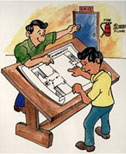 |
Familiarize yourself with your place of work and residence. Identify relatively strong parts of the building like door jambs, near elevator shafts, sturdy tables, where you can take refuge during an earthquake. Learn to use
fire extinguishers, first aid kits, alarms and emergency exits.
These should be accessible, conveniently located and prominently
marked. |
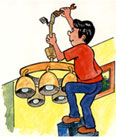 |
Most causes of injuries during earthquakes are from falling objects. Heavy materials should be kept in lower shelves. Check the stability of hanging objects which may break loose and fall during earthquakes. Prepare and maintain an earthquake survival kit consisting of a battery-powered radio, flashlight, first aid kit, potable water, candies, ready-to-eat food, whistle and dust mask. |
| DURING | |
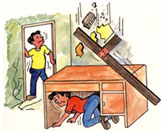 |
If you are inside a structurally sound building, stay there! Protect your body from falling debris by bracing yourself in a doorway or by getting under a sturdy table or desk. |
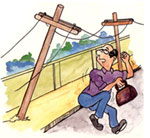 |
If you are outside, move to an open area. Get away from power lines, posts, walls and other structures that may fall or collapse.
|
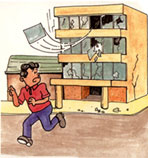 |
Stay away
from buildings with glass panes. |
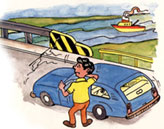 |
When driving a vehicle, pull to the side of the road and stop. Do not attempt to cross bridges or overpasses which may have been damaged. |
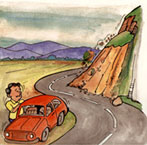 |
If you are on a mountain or near a steep hillside, move away from steep escarpments that may be affected by landslides. |
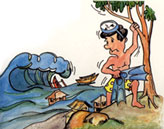 |
If you are along the shore and you feel a very strong earthquake, strong enough to make standing difficult, it is always safest to assume that a tsunami (giant sea waves) has been triggered. Run away from the shore toward higher ground. |
| AFTER | |
 |
If you are inside an old structure, take the fastest and safest way out! Do not rush to the exit; get out calmly in an orderly manner. Do not use elevators, use the stairs. Check yourself and others for injuries. |
 |
Unless you need emergency help: Do not use your telephone to call relatives and friends. Disaster prevention authorities may need the lines for emergency communications. Do not use your car and drive around areas of damage. Rescue and relief operations need the road for mobility. |
 |
Help reduce the casualties from the earthquake: Don’t enter partially damaged buildings. Strong aftershocks may cause them to collapse. Gather information and disaster prevention instructions from battery-operated radios. Obey public
safety precautions. |
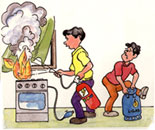 |
Check your surroundings Clean up chemical spills, toxic and flammable materials to avoid any chain of unwanted events. Check for fire and if any, have it controlled. Check your water and electrical lines for defects. If any damage is suspected, turn the system off in the main valve or switch. |
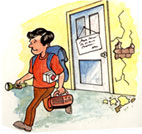 |
If you must evacuate your residence, leave a message stating where you are going. Take with you your earthquake survival kit, which should contain all necessary items for your protection and comfort. |
